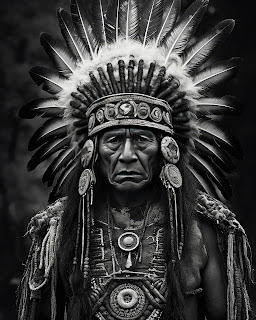The United States of America is a land of diversity, a nation built upon a foundation of immigration and cultural blending. Its identity is intricately woven from the rich tapestry of traditions, practices, and beliefs brought by its people from all corners of the globe. This article delves into how the American lifestyle is profoundly influenced by its diverse population and the cultural practices that contribute to the nation's unique identity.
Historical Context: A Melting Pot of Cultures
From its earliest days, the United States has been a magnet for people seeking better lives and opportunities. This influx of immigrants brought with them a wide array of cultural practices, languages, religions, and culinary traditions. The term "melting pot" is often used to describe the process by which these diverse cultures blended together to form a distinctly American identity.
Cultural Practices Shaping American Lifestyle
1. Religious Diversity: The United States is a religiously diverse nation, where individuals are free to practice their faiths without fear of persecution. This has led to the coexistence of various religions, from Christianity and Judaism to Islam, Buddhism, Hinduism, and more. Religious holidays and practices are integrated into the American calendar, enriching the nation's cultural fabric.
2. Culinary Fusion: American cuisine is a testament to the country's cultural fusion. Dishes like pizza, tacos, sushi, and curry have become staples in American diets, showcasing the influence of Italian, Mexican, Japanese, and Indian cuisines, respectively. Food trucks and international restaurants further promote cross-cultural culinary experiences.
3. Festivals and Celebrations: The myriad of cultural festivals celebrated across the nation underscores the influence of diverse practices. Chinese New Year, Diwali, Cinco de Mayo, and St. Patrick's Day are just a few examples of the ways in which different communities contribute to the American social calendar.
4. Language Diversity: With over 350 languages spoken in American homes, the nation is a linguistic mosaic. While English is the official language, bilingualism and multilingualism are celebrated and embraced, leading to a diverse linguistic landscape that reflects the global nature of the population.
5. Art and Entertainment: American art, music, and entertainment have been shaped by cultural cross-pollination. Jazz, born in African American communities, is considered a quintessentially American art form. Similarly, Hollywood's influence has reached global proportions, showcasing both American stories and those from around the world.
6. Fashion and Clothing: Clothing styles often reflect cultural heritage. Traditional garments from various cultures are not only preserved but also integrated into mainstream fashion. This celebration of diversity in clothing choices serves as a reminder of the various threads that make up the American tapestry.
The Evolution of American Identity
The cultural influences that shape the American lifestyle are not static. They continue to evolve as the nation adapts to changing demographics and global dynamics. Over time, these influences have woven themselves into the very fabric of American society, resulting in a unique and dynamic identity.
1. Evolving Traditions: Immigrant communities often bring with them long-standing traditions that evolve in the American context. For example, the Chinese practice of celebrating the Lunar New Year has evolved into a nationwide celebration, marked by parades, festivals, and cultural exhibitions.
2. Generational Shifts: As generations pass, cultural practices can be modified or adapted to reflect contemporary values while preserving their essence. This can be seen in the way holidays like Thanksgiving, originally rooted in historical events, have evolved into family-centric gatherings, irrespective of cultural background.
3. Hybridization: The fusion of cultural practices and traditions has given rise to new and distinct forms of expression. The celebration of "Cinco de Mayo" in the U.S., which originated as a Mexican holiday, is an example of how a cultural event has taken on new meaning and significance.
4. Education and Awareness: With increased connectivity and access to information, Americans are more aware of global cultures than ever before. This has led to a greater appreciation for cultural differences and a desire to learn and participate in practices from around the world.
Challenges and Opportunities
While cultural diversity enriches the American experience, it also presents challenges. Navigating different cultural norms, beliefs, and practices requires sensitivity and understanding. However, this diversity also offers a chance for personal growth, empathy, and learning.
1. Cultural Understanding: Engaging with diverse cultural practices promotes empathy and reduces misunderstandings. Educational initiatives that teach about various cultures can foster greater acceptance and appreciation.
2. Social Cohesion: Celebrating diversity can lead to a stronger sense of national unity. Events that bring together people from various backgrounds, such as cultural festivals, highlight the shared values that bind Americans together.
3. Inclusion and Representation: Recognizing cultural diversity in media, government, and institutions is crucial. Inclusion ensures that all Americans see themselves reflected in the nation's narrative, fostering a sense of belonging.
The American lifestyle is a dynamic blend of cultures, traditions, and practices from around the world. This diversity is the bedrock of the nation's identity, contributing to its resilience, creativity, and adaptability. From cuisine to religion, language to entertainment, the influence of different cultures is evident in every aspect of American life. As the United States continues to evolve, its cultural influences will shape its identity and contribute to its ongoing narrative as a land of opportunity and diversity.






No comments:
Post a Comment